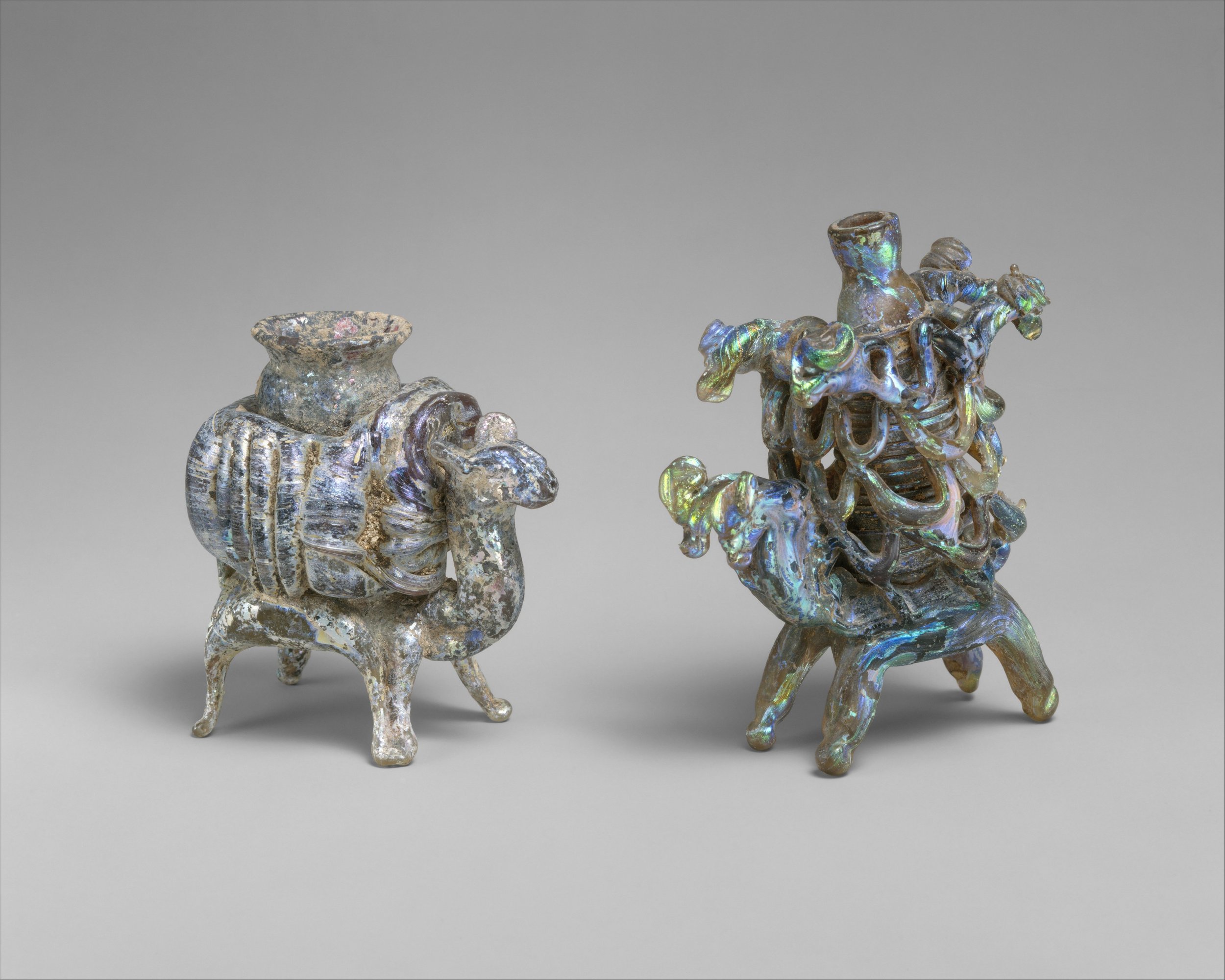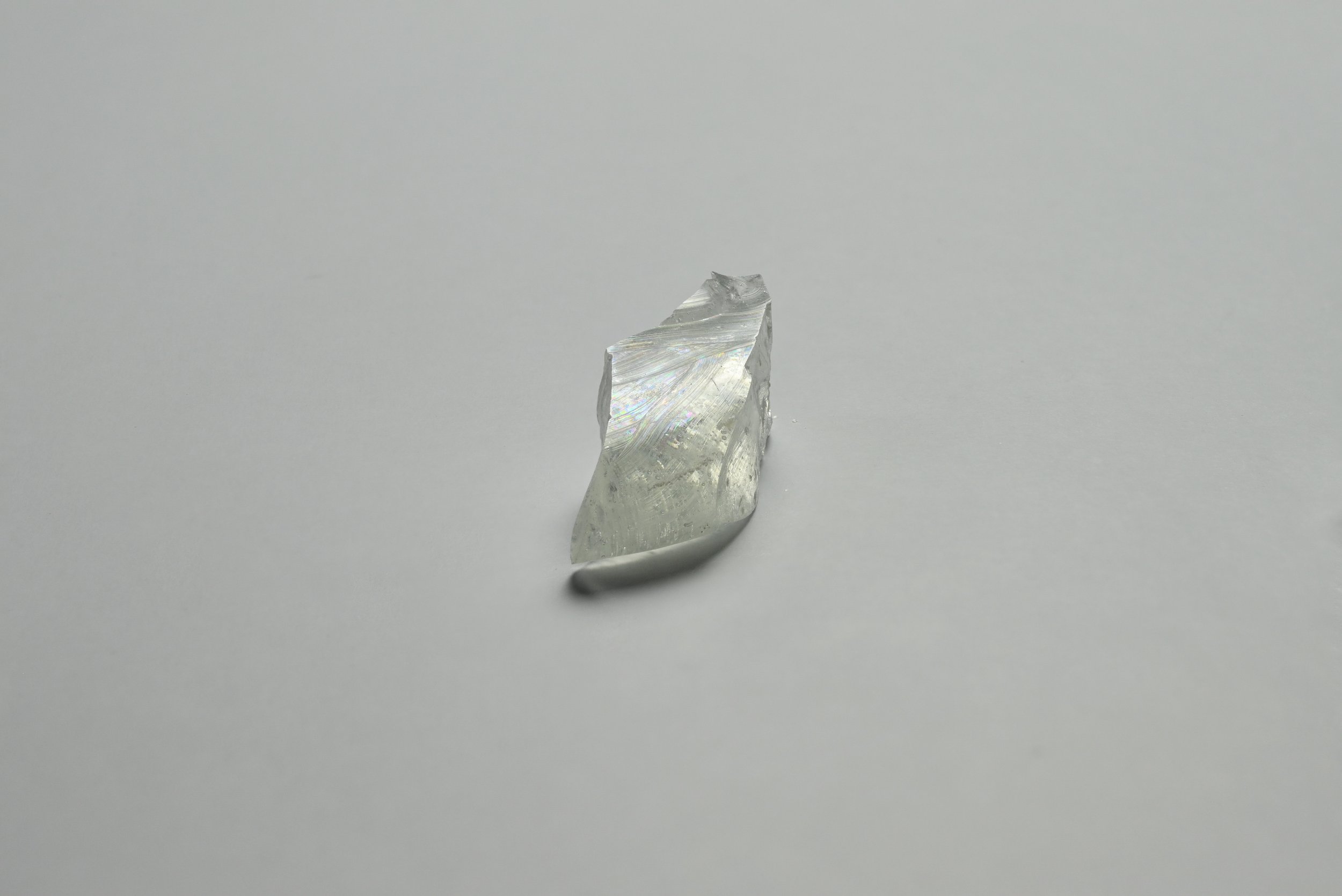Doctoral Research Project at Hasselt University and PXL-MAD School of Arts,
funded by the Special Research Fund (BOF) of Hasselt University (BOF23DOC15)
Deep surface
A Study of Glass Weathering as an artistic technique and how it can broaden the concept of Ornamentation
Abstract
The research aims to challenge latent and manifest conceptions of ‘the ornamental’ as a rigid category by creating affective experiences through artworks and texts. Concepts of relationality and connectivity will be explored both visually and textually in order to disrupt prevailing narratives and systems of valorisation. A special focus will be devoted to developing a glass/ceramic material that exploits the phenomenon of glass weathering, which is a degradation process inside glass networks that gradually manifests visually on the surface. By utilising such corrosive processes as artistic techniques, we can challenge the conventional understanding of ornament as simply a decorative surface added to a pre-existing form. This research will further draw on processes within natural life as a analogies for artistic production and a discourse that defies the binary logic of aesthetic categories.
This results in two sets of research questions;
Technical aspect:
Can a workable glass be developed that is prone to weather over a short period of time?
Can this glass serve as a base material for techniques that move on a spectrum between glass and ceramics?
Poetic and critical aspects:
Can such new artistic techniques be used to defy categorical reasoning?
How can we -through empathising with inorganic matter- endow material processes with poetic and ethical resonance?
Animal Flask, late 7th–8th century, Glass, yellowish and pinkish; blown, applied decoration
From the collection of the Metropolitan Museum of Art
More information of these objects: Metropolitan Museum of Art
Technical Aspect
The origin of this project lies within the fascinating surfaces on glass and ceramic objects that endured centuries of exposure, therefore developing an array of different patina’s that were not intended nor seen by their makers. Such historical weathered glasses are transformed by physicochemical processes in the body of the glass which gradually manifests outwards. Through the interaction with water and other environmental factors, chemical bonds within the glass networks can be altered, which allows salts to leach out of the network. In the right circumstances, this process can result in microscopic pathways in the outer layers of the glass. The resulting laminar structure then reflects light in a prismatic way, causing it to appear as opalescent and iridescent hues. (Giffen, 2014) The appearance of the skin is thus caused by the dynamics in the deeper levels of the glass, reacting on its surrounding. While being a major obstacle for the preservation of historic glass, this phenomena also inspired artist/scientist to mimic its effect through ‘cosmetic’ means. Through this research I will use our current scientific knowledge of glass weathering to exacerbate and speed up the corrosion in order to develop new artistic materials. By formulating different batch-calculations and exposure programs, these glass/ceramic materials will not solely mimic the effects, but rely on the corrosion as an active agent of formation.
Several experimental glass recipes were formulated and are now in different stages of production and exposure cycles.
PMF 3.1 on Clay - After two months of exposure
PMF 4.1 on Clay - After two months of exposure
Poetic Critical Aspects
Analysing ornament as a historical and contemporary conundrum within aesthetic theory offers a critical perspective on the development of art. One of such observations is that aesthetic categorisations reach beyond their linguistic function and impact reality when it becomes a system of valorisation. This informs the way we structure, communicate, and create art. As a response to the binary structure of such categories, I want to propose a revision of these concepts towards a more flexible model. The argumentation and structure of this alternative vision will be found in literature that makes connections between the creative processes of nature and art. It is within such relations that glass weathering can be introduced as a phenomena, that - on a material and conceptual level - intersects with the concept of ornament.
One of Modernisms radical doctrines was the condemnation of ornament. Recent attempts to rehabilitate it from theoretical and artistic perspectives are at risk of reaffirming the binary logic and stereotyping that lie at the core of the problem. As an example of polarisation within the arts, we should explore alternative strategies to this polemic. My proposition is that artistic methods should be explored that transcend such binary logic and look for ways in which meaning and forms are generated by seeing artistic production as a process of relational growth. I want to explore this artistic strategy beyond the dichotomy of ornament and see if it can be extrapolated to challenge unwanted categorisations altogether. Can art become a vehicle for creation that, through its emphasis on fluidity, provides a space for co-existence, communication and mediation? I want to research how the methodology of- and materials in my practice can be engaged as agents in the developing new works and installations.
With this framework in mind, the proposed empirical and experimental research is aimed at expanding my material vocabulary with techniques that behave in parallel with this artistic strategy. The technological and artistic research works in tandem in which such ‘vitalities’ can be explored.
























